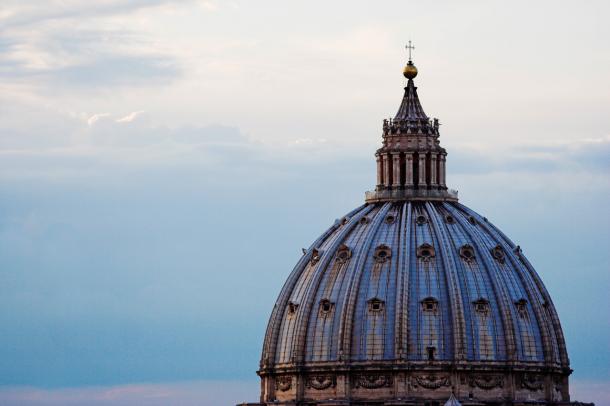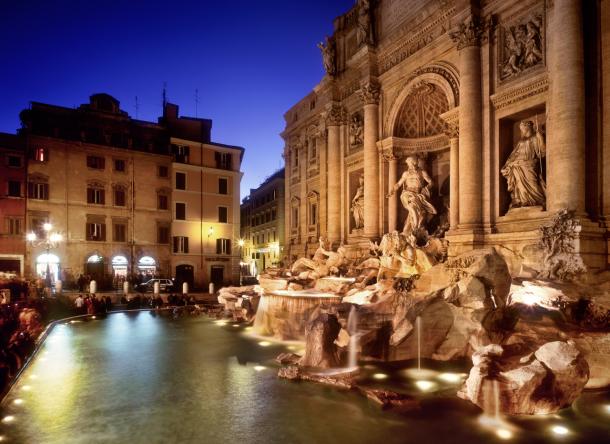Rome (Roma): The Global Capital of Classical and Baroque Art
They say that all roads lead to Rome and certainly if you visit Italy without seeing her breathtaking capital city then you will regret it. Rome is a heady mix of the ancient and the modern, a vibrant and convivial place where the Pantheon and the Colosseum are as much part of daily life as the A.S. Roma football team, high fashion and the latest cool night clubs in Testaccio.

As one of the most filmed and photographed cities in the world with a wealth of famous sights at every turn, Rome can be overwhelming, so it plays to plan how you will spend your day, or days, so that you can get the most from this unique living museum. But you also have to let the city surprise you, so allow for unstructured time to just wander her streets and see what little gems you uncover.
The Roman Forum, the Pantheon, the Colosseum, the Sistine Chapel, the Spanish Steps, the Trevi Fountain and the Vatican are all must-sees. Here’s just a little more information on each of them.
The Roman Forum is located in a valley between two of Rome’s famous seven hills, the Palatine and Capitoline hills and the main sights are along the via Sacra or ancient sacred road. The Forum is a famous and fabulous jumble of ruined temples, basilica, arches and other assorted buildings. It used to be the marketplace and business centre of ancient Rome and is as busy these days as it was two thousand years ago, only this time its tourists who make up the crowds. Allow a couple of hours for your visit.
The Pantheon is in via dei Pastini 131 and is the most complete Roman building in existence. Built between 25 and 27 BC at the location where the founder of Rome Romulus was dropped by an eagle, the Pantheon was subsequently rebuilt and added to by the Emperor Hadrian. It was originally a temple to all the gods and later, in the 7th century, became a church and is now lined with tombs. To add to the superlatives, it also has the biggest brick dome in the world.
The Colosseum, also known as the Flavian amphitheater, is arguably Rome’s most famous monument. Located in the center of the city near Piazza Venezia and the Roman Forum, this huge amphitheater was completed in AD 80 and was once the scene of gladiatorial battles – man against man and man against animal, and held up to 55,000 people.
The Sistine Chapel is inside Vatican city and is probably most famous for its wonderful ceiling by Michelangelo, literally and metaphorically his crowning achievement which includes the iconic Creation of Adam panel where God touches the forefinger of Adam. The Sistine Chapel is named after Pope Sixtus IV and was built between 1475 and 1481. It is the last room you see on the Vatican Museums Tour and although Michelangelo is the star, there are decorations by other Italian Renaissance masters including Perugino, Botticelli, Rosselli and Signorelli.
The Spanish Steps (Scalinata della Trinita’ dei Monti) link Piazza di Spagna at the bottom with Piazza Trinita dei Monti at the top and are one of Rome’s most iconic locations, whether being descended (carefully!) by the world’s top models in the summer fashion show Donna Sotto le Stelle or as a location in many films including the 1953 classic Roman Holiday. The Scalinata has 138 steps and forms a fan or butterfly shape. It was constructed between 1723 and 1725 in Roman Baroque style after a competition for the best design, won by Francesco di Sanctis.

The Trevi Fountain (Fontana di Trevi), in Piazza di Trevi, is allegedly the most beautiful fountain in the world, and if you throw a coin in you will be sure to return to Rome one day. The largest fountain in the city, its ornate Baroque style conceals the fact that it once marked the end of a Roman aqueduct built to supply water to Emperor Agrippa’s thermal baths. Italian popes embellished and added to the fountain but the version we know was designed by Nicola Salvi and completed in 1762 and has as its centerpiece the Roman god Neptune in a chariot drawn by sea horses and guided by two tritons. Like the Spanish Steps, the Trevi fountain has featured in many films including Fellini’s classic La Dolce Vita.
The Vatican is not actually part of Rome, but a separate sovereign city state (the smallest in the world), ruled over by the Pope who resides there in the Apostolic Palace. Vatican City is home to St Peters Basilica as well as the Sistine Chapel. The Vatican museums are probably the greatest in the world and it is little wonder the Vatican Museums Tours are so popular with tourists. You would be advised to get your tickets in advance, dress appropriately and allocate a whole day to this unforgettable experience.
Remember that Rome is a fabulous place for all kinds of shopping and our Rome shopping guide will help you make the most of your time in one of the most exciting cities in the world.
Related news stories:
Trastevere: A Tourist’s Secret When in Rome
Top 10 Tips When Visiting Rome
History Under Your Feet: Discover Rome’s Underground
Special vacation ideas
Italian Historical and Botanical Gardens
